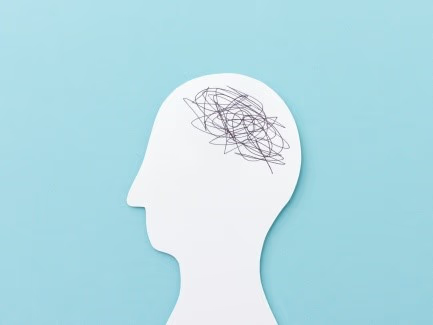Post-traumatic stress disorder
PTSD
Peer reviewed by Dr Krishna Vakharia, MRCGPLast updated by Dr Hayley Willacy, FRCGP Last updated 11 Sept 2023
Meets Patient’s editorial guidelines
Post-traumatic stress disorder (PTSD) is a condition where you have recurring distressing memories, flashbacks and other symptoms after having or witnessing a traumatic event. Treatment options include antidepressant medication and non-medicinal treatments such as cognitive behavioural therapy.
In this article:
Continue reading below
What is post-traumatic stress disorder?
Post-traumatic stress disorder (PTSD) is a mental health condition condition which develops after you have been involved in, or witnessed, a serious trauma such as a life-threatening assault. During the trauma you feel intense fear, helplessness or horror. Some people develop PTSD soon after the trauma. However, in some cases people only start experiencing symptoms several months, or even years, after the trauma.
Patient picks for Anxiety
Post-traumatic stress disorder symptoms
Recurring thoughts, memories, images, dreams, or flashbacks of the trauma day to day which are distressing.
You try to avoid thoughts, conversations, places, people, activities or anything which may trigger memories of the trauma, as these make you distressed or anxious.
Feeling emotionally numb and feeling detached from others. You may find it difficult to have loving thoughts and feelings.
Your outlook for the future is often pessimistic. You may lose interest in activities which you used to enjoy and find it difficult to plan for the future.
Increased arousal which you did not have before the trauma. This may include:
Difficulty in getting off to sleep or staying asleep.
Being irritable, which may include outbursts of anger.
Difficulty concentrating.
Increased vigilance.
Being more easily startled than you were before.
Note: it is normal to feel upset straight after a traumatic event. But for many people the distress gradually eases. If you have PTSD the distressing feelings and symptoms persist. In some cases the symptoms last just a few months and then ease or go. However, in some cases the symptoms persist long-term.
Up to 4 in 5 people with PTSD also have other mental health problems such as depression, persistent anxiety, panic attacks or phobias, or misuse drugs or alcohol.
Having a mental health disorder before the trauma seems to increase your chance of developing PTSD. But also, having PTSD seems to increase your risk of developing other mental health disorders.
Continue reading below
What triggers post-traumatic stress disorder?
The strict definition of PTSD is that the trauma you had or witnessed must be severe, there can be many triggers for PTSD including; a severe accident, sexual assault, rape, a life-threatening assault, torture, seeing someone killed, etc. However, symptoms similar to PTSD develop in some people after experiencing traumatic events that are less severe.
How common is post-traumatic stress disorder?
It is estimated that around 6 in 100 people may develop PTSD at some stage in life. In the UK, 4 in 100 people are expected to have PTSD at any given time.
It is much more common in certain groups of people. For example, some studies have found that PTSD develops in about:
1 in 5 firefighters.
1 in 5 police officers.
1 in 3 teenage survivors of car crashes.
1 in 2 rape survivors.
1 in 3 prisoners of war.
Some people have risk factors which make them more prone to develop PTSD when they are exposed to a traumatic event. These include:
Previous mental health problems.
Being female.
Coming from a poor background.
Lack of education.
Coming from an ethnic minority.
Being exposed to trauma in the past.
A family member with a history of mental illness.
Post-traumatic stress disorder treatment
You may need no treatment for PTSD if your symptoms are mild, particularly if the trauma happened less than a month previously. However, if your symptoms are prolonged and moderate or severe, treatment from a mental health professional can help you to adjust. If you have severe symptoms 2-4 weeks after the incident, you are likely to need treatment.
You should be aware that no treatment will 'wipe the slate clean' and erase all memories of the event.
Note: some non-medicinal treatments mentioned below may not be available on the NHS in every area.
Continue reading below
Talking treatments and other non-medicinal treatments
Cognitive behavioural therapy (CBT)
Briefly, CBT is based on the idea that certain ways of thinking can trigger or fuel certain mental health problems such as PTSD.
Eye movement desensitisation and reprocessing (EMDR)
This is an option seems to work quite well for treating PTSD after a traumatic experience. Briefly, during this treatment a therapist asks you to think of aspects of the traumatic event. Whilst you are thinking about this you follow the movement of the therapist's moving fingers with your eyes. It is not clear how this works. It seems to desensitise your thought patterns about the traumatic event. After a few sessions of therapy, you may find that the memories of the event do not upset you as much as before.
Other forms of talking treatments
That such as anxiety management, counselling, group therapy and learning to relax may be advised.
Self-help
Joining a group where members have similar symptoms can be useful. This does not appeal to everyone but books and leaflets on understanding PTSD and how to combat it may help.
There is no agreement on which type of non-medicinal treatment is best and further research needs to be done in this area.
Medication
Medicines are usually reserved for people who do not respond to talking treatments or other non-medicinal treatments.
Antidepressant medicines
Particularly paroxetine and mirtazapine, have been found to help reduce the main symptoms of PTSD even if you are not depressed. They work by interfering with brain chemicals (neurotransmitters) such as serotonin which may be involved in causing symptoms.
Benzodiazepines
Benzodiazepines such as diazepam are sometimes prescribed for a short time to ease symptoms of anxiety, poor sleep and irritability.
A combination of treatments such as CBT and an SSRI antidepressant may work better in some cases than either treatment alone.
How to help someone with post-traumatic stress disorder
Friends and family can:
Keep a look out for behavioural changes, such as taking time off from work.
Look out for mood changes such as anger and irritability.
Provide a sympathetic ear and ask general questions.
Give the person time to talk and not interrupt them.
Can post-traumatic stress disorder be prevented?
Debriefing used to be offered to people affected by natural disasters, etc. It is no longer considered effective for individuals but has been found useful for selected groups (for example, emergency workers before going back to work in stressful situations). No other treatment or medication is yet approved to prevent people from developing PTSD should they be exposed to a traumatic even.
Post-deployment support has been shown to be helpful in military personnel who have been in front-line battle.
Screening is appropriate for people who have been subjected to major disasters and for asylum seekers and refugees.
What is the outlook for PTSD?
There are very few good-quality studies that look at the long-term outcome for people with PTSD. Most people will have an 'acute stress reaction' (with some symptoms of PTSD) that lasts around a month after the traumatic event. About 1 in 3 of those people will have symptoms that last longer and can develop into PTSD.
How long can PTSD last?
For many, the symptoms can be severe and enduring. A US study found people with PTSD who had treatment, experienced symptoms for an average of 36 months. By contrast those who had no treatment had symptoms for an average of 64 months.
Another study looked at differences between intentional and unintentional harm; 50% of people who had experienced unintentional harm spontaneously recovered within 12 months.
Further reading and references
- Post-traumatic stress disorder; NICE Guidance (December 2018)
- Wilson G, Farrell D, Barron I, et al; The Use of Eye-Movement Desensitization Reprocessing (EMDR) Therapy in Treating Post-traumatic Stress Disorder-A Systematic Narrative Review. Front Psychol. 2018 Jun 6;9:923. doi: 10.3389/fpsyg.2018.00923. eCollection 2018.
- Post-traumatic stress disorder; NICE CKS, August 2022 (UK access only)
- Schrader C, Ross A; A Review of PTSD and Current Treatment Strategies. Mo Med. 2021 Nov-Dec;118(6):546-551.
- Stanciu CN, Brunette MF, Teja N, et al; Evidence for Use of Cannabinoids in Mood Disorders, Anxiety Disorders, and PTSD: A Systematic Review. Psychiatr Serv. 2021 Apr 1;72(4):429-436. doi: 10.1176/appi.ps.202000189. Epub 2021 Feb 3.
Article History
The information on this page is written and peer reviewed by qualified clinicians.
Next review due: 9 Sept 2028
11 Sept 2023 | Latest version

Feeling unwell?
Assess your symptoms online for free

